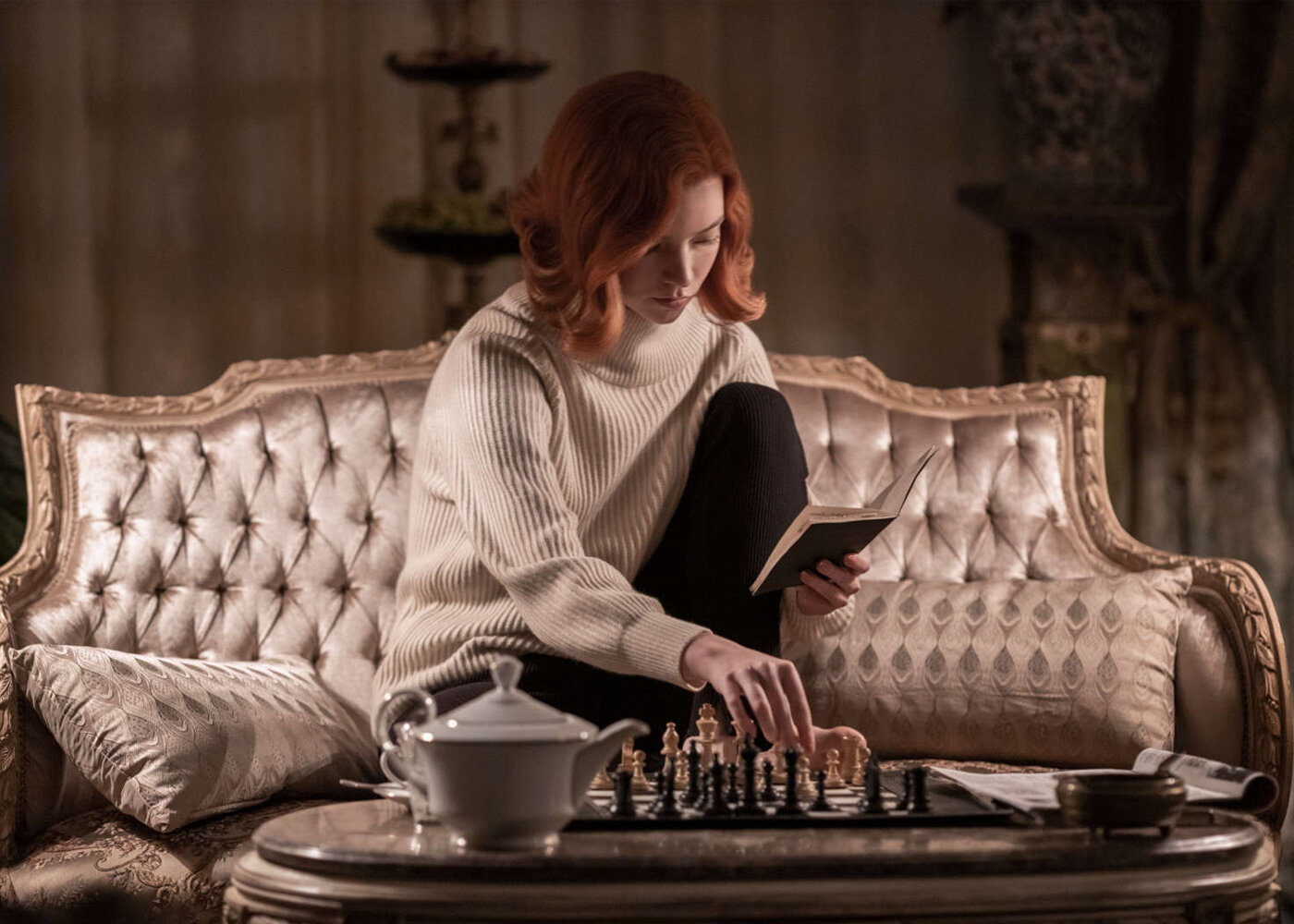TV Review: The Queen's Gambit
Netflix gives chess some bite with the lush and thrilling The Queen’s Gambit
Seemingly out of nowhere, with a trailer released only a month ago, Netflix’s The Queen’s Gambit has captured the hearts and minds of audiences everywhere, and for good reason - it’s quite fun. Pure escapism through the lens of high-stakes chess, the limited series stars Anya Taylor-Joy as Beth Harmon, a child prodigy that enters the male-dominated realm of one of the world’s oldest strategy games. With a captivating lead performance and a meticulous attention paid to its period details, The Queen’s Gambit looks to dose chess with some cinematic octane, and it largely succeeds despite its hesitation to dig deep. Minor spoilers ahead…
Cerebral, glacial, and largely internalized, the world of chess isn’t exactly tailored for streaming entertainment, but Netflix’s new original series - The Queen’s Gambit - performs a special kind of alchemy, turning one of the oldest strategy games into thrilling television. A fairly straightforward crowdpleaser under a prestige guise, creator Scott Frank’s adaptation of Walter Tevis’ 1983 novel of the same name utilizes lush details, exquisite costuming, and a captivating lead performance from Anya Taylor-Joy to inject new life into an old sport. The Queen’s Gambit combines the sensibilities of a period drama with rousing competitive suspense to form a narrative that is perfectly engaging, even if it’s not quite as deep as appearances let on.
Opening in media res, we’re introduced to an adult Beth Harmon (Anya Taylor-Joy, instantly elevating the show’s watchability) as she scrambles out of her hotel room, late for a fateful match with Russian grandmaster Vasily Borgov (Marcin Dorocinski). As both players prepare to make their first moves, Beth flashes back to her childhood, recounting the origins of a chess obsession born from both prodigious talent and a deep-rooted trauma that placed her in an orphanage at age 9. The Queen’s Gambit spends its first episode-and-a-half in the 1950s as the young Beth (Isla Johnston) navigates her new surroundings, cared for by a medically ignorant staff that will form the basis of her future pill addiction. Everything changes, however, when she’s introduced to the game of chess with the help of the orphanage’s janitor, Mr. Shaibel (a paradoxically icy and lovable Bill Camp). It’s here that Beth begins to show the skills and gumption that will take her from orphan to chess grandmaster - at night, she manipulates the countless permutations of phantom game pieces on the ceiling above her bed, and armed with a potty-mouth enabled by her only real “friend” Jolene (Moses Ingram), Beth displays a barbed competitive spirit by calling Mr. Shaibel a “cocksucker.”
“The Queen’s Gambit combines the sensibilities of a period drama with rousing competitive suspense to form a narrative that is perfectly engaging, even if it’s not quite as deep as appearances let on. “
By the second episode, Beth - as a young teenager now played by Taylor-Joy - is adopted by Alma Wheatley (film director Marielle Heller flexing her acting skills), a lonely housewife with an absentee husband. At first, Mrs. Wheatley’s characterization leans into the “cold and unfeeling stepmother” trope, but very quickly, this mother-daughter relationship forms the emotional bedrock of The Queen’s Gambit, centered by Heller’s tender and soulful performance. It takes a while, but before long, Beth and Alma are maneuvering themselves in the male-dominated world of competitive chess, with Beth accumulating her Elo rating points and Alma as her manager-of-sorts.
The chess itself, of course, is The Queen’s Gambit’s main course. A kinetic portrayal of the game that is frankly, quite remarkable, the series’ chess scenes are carried as much by body language as the moves themselves. Even for viewers who can’t tell the difference between a bishop and a knight - let alone a Stafford Gambit and a Vladimirov’s Thunderbolt - the gamestate is not only easy to follow, it’s downright exciting, much of which is owed to Anya Taylor-Joy’s arresting performance. Michelle Tesero’s editing along with Carlos Rafael Rivera’s energetic score combine brilliantly with Taylor-Joy’s pensive staredowns and furtive guile - the wins, losses, and dramatic tension are all conveyed in a way that doesn’t require any knowledge of the game, and that’s a feat unto itself. The Queen’s Gambit is riveting sports drama, and a gripping portrayal of the game that hasn’t really been seen since 2012’s Pawn Sacrifice.
“Even for viewers who can’t tell the difference between a bishop and a knight…the gamestate is not only easy to follow, it’s downright exciting…”
Another highlight of the series comes in the form of its supporting cast, namely, a colorful revolving door of male opponents that Beth continually bests. And while there is an air of sexist patronization and condescension at first, The Queen’s Gambit refreshingly allows its many men to be gracious and supportive. Players such as Benny Watts (Thomas Brodie-Sangster), Harry Beltik (Harry Melling), and D.L. Townes (Jacob Fortune-Lloyd) are introduced as adversaries, but they all wind up being trounced by Beth’s superior play - and in the wake of their losses, they join a band of merry chess players that movingly cheer their former opponent from the sidelines. It might not accurately depict the actual attitudes of mid-century men, but the show revels in rarified, feminist storytelling that’s free from abuse and harassment.
The Queen’s Gambit, however entertaining, does run into a speed bump: it isn’t very challenging. Through the lens of Beth and Alma, Scott Frank is adept at outlining the iniquities that come with being a middle-class white woman in the 1950s and 1960s, but when it comes to Beth’s personal journey, the narrative is rather frictionless. In true biopic fashion, the series wants to position itself as a meditation on the true cost of genius, but Beth Harmon’s ascent in the world of chess is mostly unimpeded - there’s never really a question of her success. Even her supposedly debilitating pill addiction is treated as a mere obstacle, and at the lowest point in her career, a magical reappearance by Jolene - in a pat and misguided Black savior moment - saves the day.
With its immersive storytelling and dazzling performances, The Queen’s Gambit hides much of its popcorn entertainment under a sheen of prestige TV. Perhaps, this is purposeful; perhaps Scott Frank and his team know that self-sabotaging geniuses are a dime a dozen in the landscape of peak television, and the show is this breezy by design. With Anya Taylor-Joy at its center, the narrative ease is undoubtedly part of the series’ magical spell; even when the turns are predictable and the stakes are low, The Queen’s Gambit compels and intrigues. In these difficult times, maybe it’s exactly what we need.













